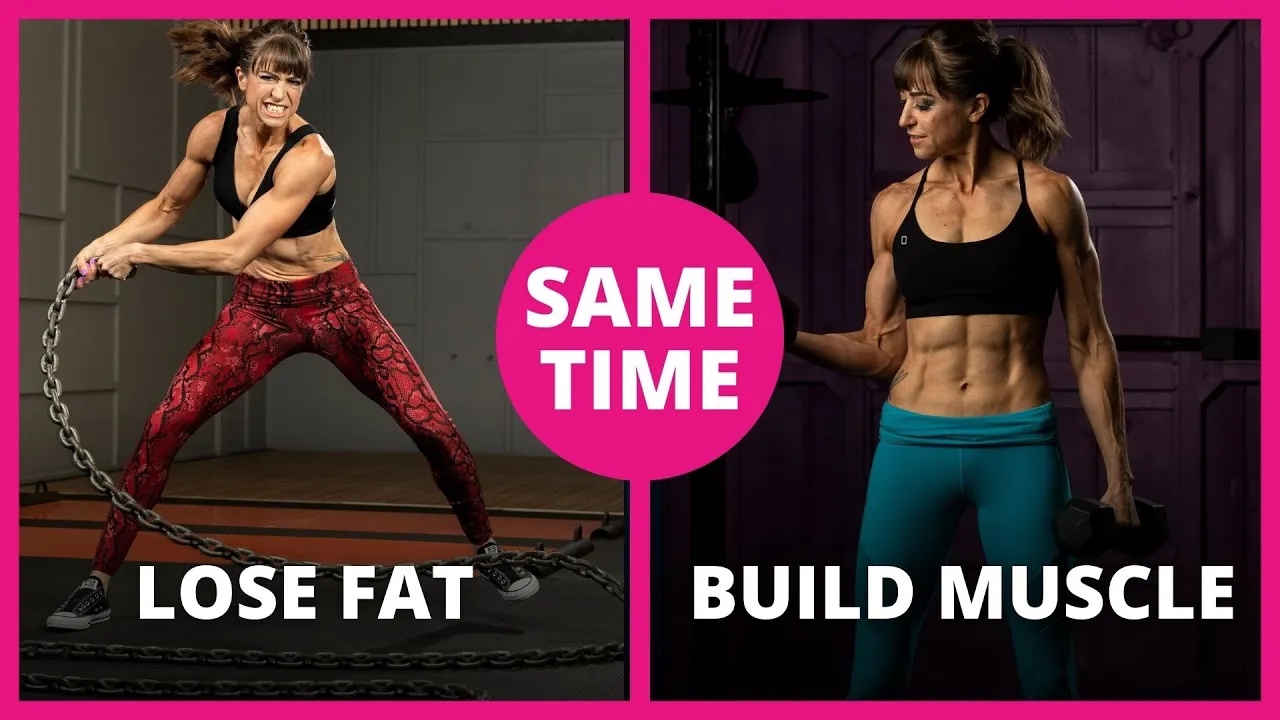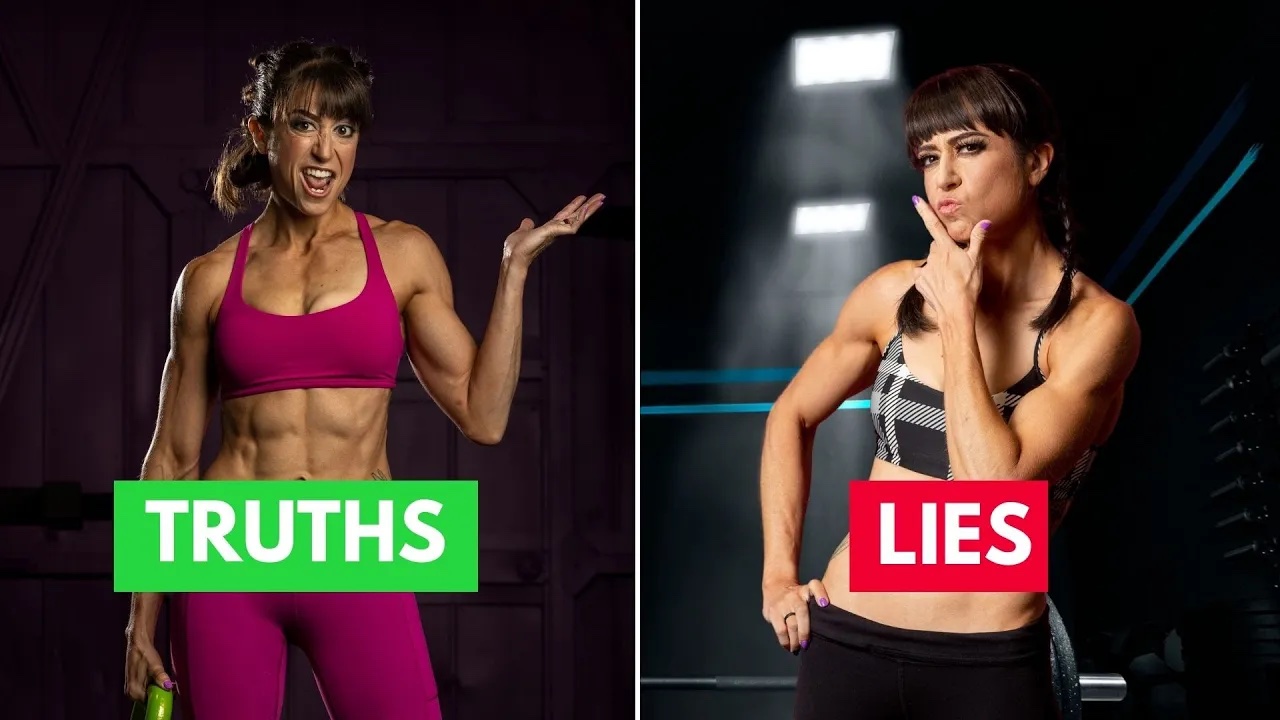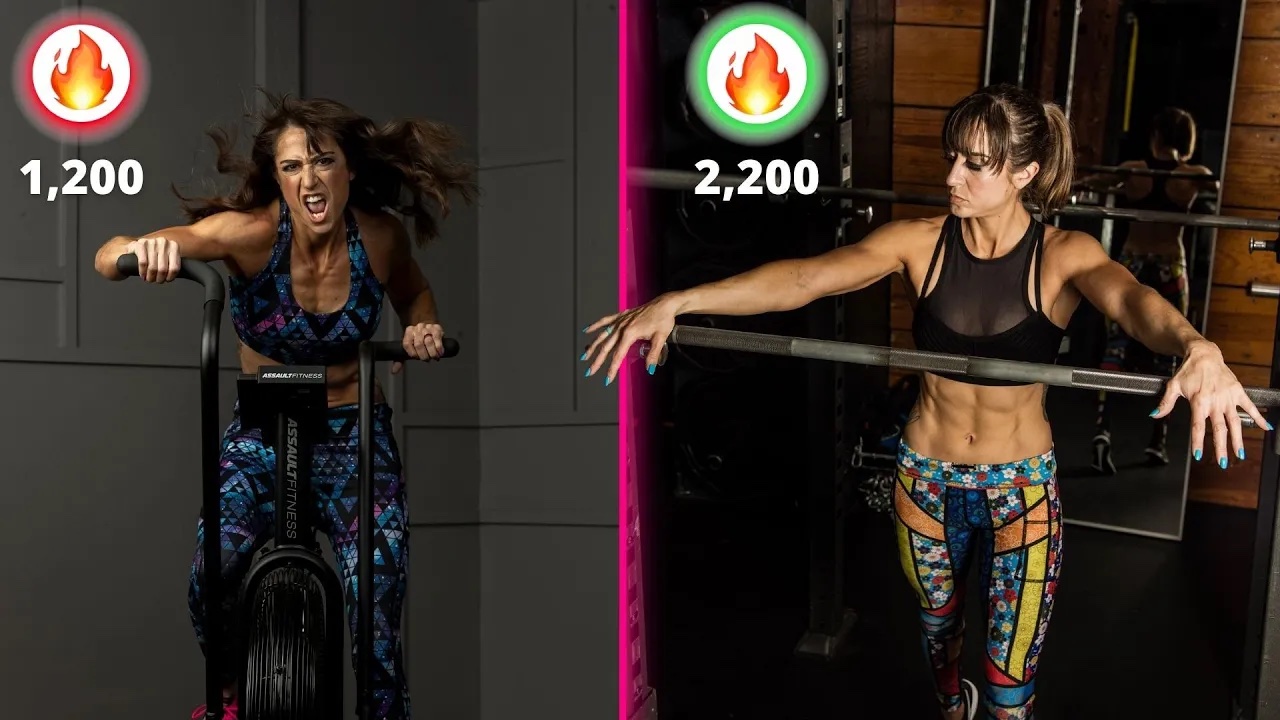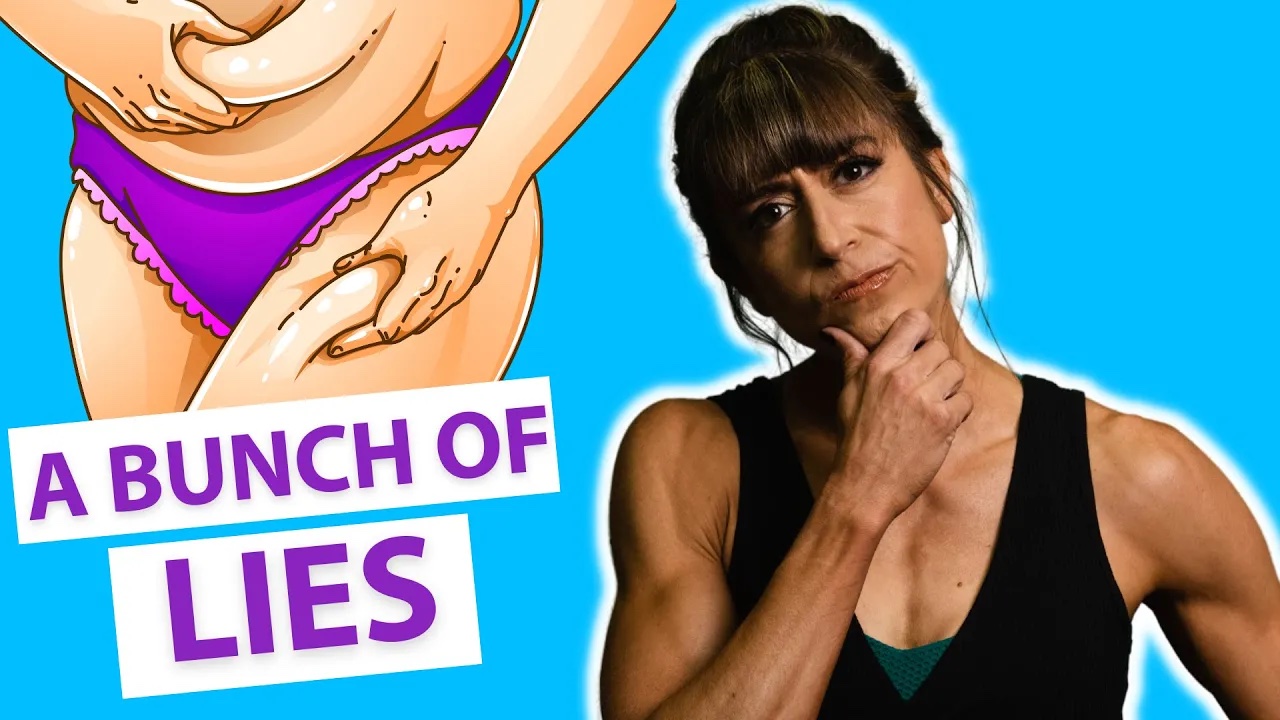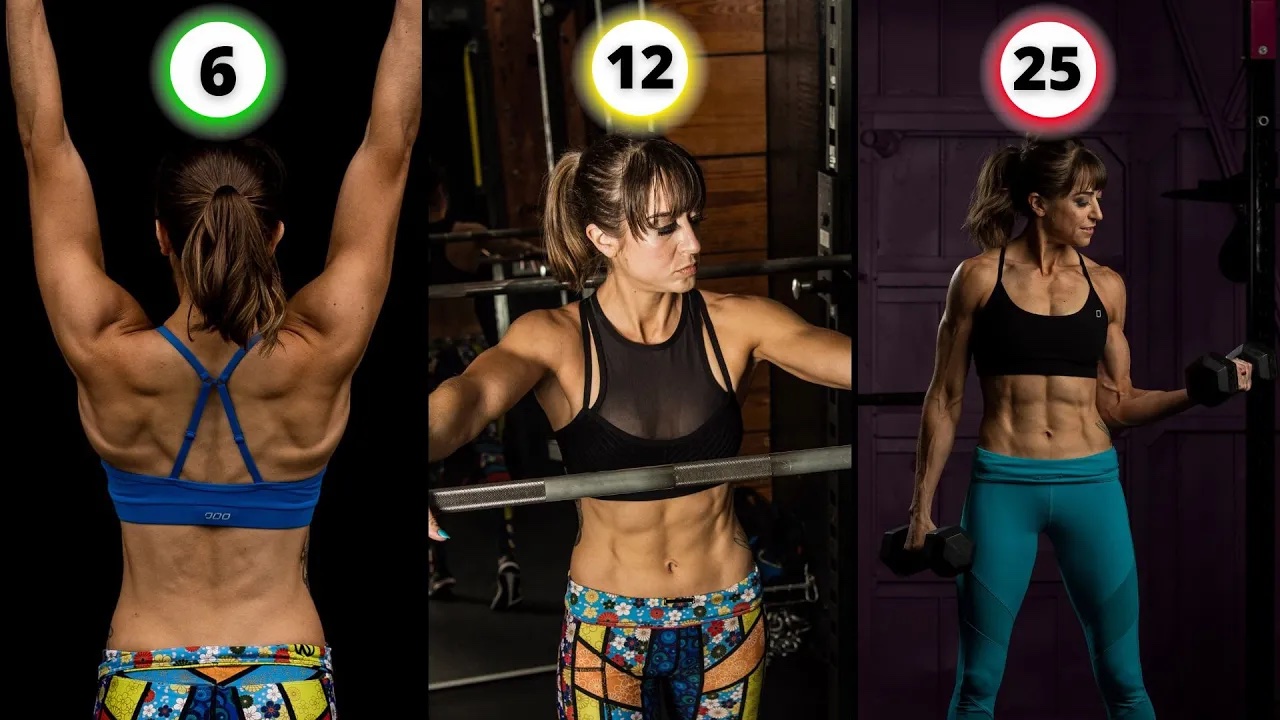
If You’re Not Building Muscle, Try These 5 Training Techniques
We can’t out exercise our diet.
HOWEVER, while many of us have heard that diet is more important, I’d actually argue they both matter equally especially in that both need to work together.
And so often we don’t place enough importance on proper training because we’ve only seen our workouts as a chance to burn more calories.
But our training shouldn’t be about the calorie burn.
It should be about building muscle.
When we focus on better movement and building strength and muscle in our training, we create true muscle growth.
Without proper stimulus, no matter how you eat, you won’t build muscle.
So while our diet is especially important to lose fat, and important to make sure we fuel our training sessions to gain…
Our workouts have to be designed strategically if we want to improve our body composition.
And this honestly means going against what most of us have always done to lose weight…
Instead of more cardio, we often need less.
And we need to stop turning our lifting sessions into simply cardio workouts – cutting out more rest and adding a ton of volume.
Now note…I’m not telling you that cardio isn’t important to your health and that you can’t do it if you enjoy it…
I do want to make it clear that to build muscle so we can lose fat faster, we can’t default back into this cardio, calories, do more training mindset.
That’s why I want to share 5 training techniques to help you build muscle, which in turn will boost your metabolic rate and help you look leaner faster…

Training Technique #1: Focus on double progression.
If it challenges you, it will change you.
But just because your workout feels hard doesn’t mean you’re creating a consistent progression so your muscles have to adapt and grow stronger week after week.
That’s why it’s key we not only progress the movement, adding weight, slowing down the tempo, doing a harder variation, but also adjust our exact reps to create that week over week progression.
Using these two forms of progression to complement we can ultimately move more loads over our training sessions, resulting in faster and better gains.
Often when we have a workout there will be 8-12 reps listed.
Let’s say right now you’re doing 12 reps of front lunges with 20lbs dumbbells and you manage that for all 4 sets you have assigned.
It feels hard.
Good.
But you’re at the top of the rep range so next week, GO UP in weight or progress the move in some way.
If you can still do 12 reps that first round, go up in weight for that next step until you can’t do 12 reps.
Let’s say on your 3rd round, you hit 8 reps with 35lbs dumbbells. Maybe you stick there for the final round.
The next week instead of going up in weight, you try to get out 9 or 10 reps. Once you can again do 12 reps, you again want to go up.
This double form of progression is the perfect way to max out the loads you can lift with volume and truly make sure you’re challenging yourself to create that muscle growth!
Training Technique #2: Train areas more frequently with the same but different.
Studies have shown that training an area 2-3 times a week can be optimal for muscle growth.
This doesn’t mean do 1000s of reps multiple times a week. It means definitely dropping volume a bit per session to increase the frequency and spread it out.
This allows for often more QUALITY volume as you may notice you are fresher for all the exercises and sets spread out over more days over doing that same volume in one.
This also allows you to use a diversity of movements and tools to work the same muscles.
And this can be key because changes in posture and position alone can impact even what aspects of a muscle are worked.
For instance a Romanian deadlift works the hamstrings through hinging at the hips. A seated leg curl works the hamstrings with knee flexion with flexed hips while a bridge and curl works the hamstrings with knee flexion with extended hips.
All three are different postures that address different aspects of that hamstring muscle group. And including three different moves over the 3 days can be key for optimal gains.
So don’t repeat just the same move 3 times a week. Consider different types of movements, ranges of motion and even different tools!
Training Technique #3: Combine rep ranges in a single workout.
If you want to gain muscle, you want to use a variety of rep ranges combined.
This can not only help you build strength and improve your strength and endurance and recovery, but even target stubborn muscles and push them past failure to see better results.
Some of you may have seen my 6-12-25 workout progressions in previous YouTube videos and podcasts, but this design is so fabulous because it does include maximal strength, hypertrophy and strength endurance rep ranges in a single series – moving from compound to more isolation exercises.
This helps you get in that quality of movement while isolating those more stubborn areas.
So don’t fear higher reps. Don’t fear lower reps.
Include a diversity in a single session even.
But be conscious of the types of moves you use with each.
Often in our workouts we want to go more compound to more isolated, with heavier lower rep work first and the higher rep, more isolated work later to work a muscle fully to fatigue.
However, like in the 6-12-25 and even compound burners, you can use 2 or even 3 rep ranges combined to lift heavy for lower reps then right after isolate that muscle that is already fatigued to recruit more muscle fibers with higher rep work.
And note, while you will go “lighter” with higher rep work, you aren’t going light.
Especially when you are working with higher reps, to push yourself, consider using a weight or variation you have to pause to get out 5 more and hit in the middle or top of the range.
That need to pause and do 5 more past failure is so key to those amazing gains!
Training Technique #4: Do more timed workouts.
Too often when we want to lose weight, our workouts get longer and longer as we add in more and more.
But this often just burns us out and leads to a lot of wasted volume.
By doing intervals or work or even timed sets, we can increase our training density without our workouts getting longer.
We can focus on that quality work and create that density by just trying to do MORE in the time set out.
I find that often when I use intervals over having do count a certain amount of reps, I eek out reps I wouldn’t have done had I been able to stop at 6. I end up doing 8 because I have the time and have to work through it…even if I have to pause for a second.
I also find I’m focused and more intentional over just rushing through because I can’t finish any faster.
And when it comes to timed sets or circuits, like Density Sets, you can lower the reps and increase the weight and keep moving the entire time to actually lift more quality loads without your workouts getting longer.
So consider timed intervals of work or timed sets to help yourself really push with each rep over simply doing MORE.
Especially since so many of us complain we don’t have enough time, why not plan for what you have and really be intentional and focus on quality with every rep!
Honestly the only reason our workouts should ever get longers is because we have the time and do more mobility work OR have increased rest periods to lift heavier with lower reps or to do more high intensity true sprint work.
Workouts become longer because of recovery not because we’re doing more work!
Training Technique #5: Vary intensity of workouts and type of drivers.
For the best results, some workouts should feel easy. Not every workout should slaughter you.
Because if you don’t recover, you can’t train at a true 100% intensity.
Not to mention, if you’re tearing down muscles constantly, they can’t regrow stronger.
It’s a cut. If you’re constantly working and picking off the scab, it’s not going to heal back!
You’ve got to give it time to heal…although unlike a cut we do want to reopen the wound to make our muscle feel pushed to adapt more and more!
So over the course of your week, vary what areas you are working. Give muscles time to recover.
And vary the intensity of your workouts. This helps areas recover while still driving growth. And it also helps you MENTALLY stay focused and push hard when you need.
We can’t mentally make ourselves extremely uncomfortable every session or we will burn out. So having a workout or two each week that isn’t taxing, especially programmed on busy days, can actually help you get more quality work done overall for the week.
And those recovery sessions can help you move better in future workouts.
So vary intensity!
And this doesn’t just mean easy or hard workouts. It also means varying the types of movements and what driver of muscle growth you use as some create more muscle tissue damage and take longer to recover from.
For example, maybe one day you do a deadlift, another a hip thruster and the 3rd day you include only mini band work for your glutes.
These all use different drivers of muscle growth and allow you to train your glutes 3 times that week and go hard in each session without just constantly beating your body down!
So consider the types of movements you’re using and even the tools!
WARNING: Stop seeking to be sore.
I mean this because if you vary intensity and use different drivers or muscle growth, you won’t be sore all of the time.
GOOD!
Soreness is not an indicator you worked hard enough.
And while it can feel good and satisfying at times to know you pushed, not being sore doesn’t mean you didn’t work hard.
Honestly, you shouldn’t constantly be sore if you’re truly creating progression to build.
Over the weeks of your workout progression, you should feel like you can even do more, more easily without getting sore.
Because soreness is often just an indicator we did something new or different.
That we didn’t give ourselves enough recovery.
That we focused only on the eccentric and mechanical tension as a driver of muscle growth.
That we aren’t eating enough.
Or hydrating well.
Constant soreness actually means we’re probably not doing something we need to see results.
So focus on that clearly mapped out progression you repeat and track those numbers to see progress instead of just pushing to be sore!
Looking for amazing workouts to take your training to the next level and help you see fabulous body recomp results?
Check out my Dynamic Strength Program!

